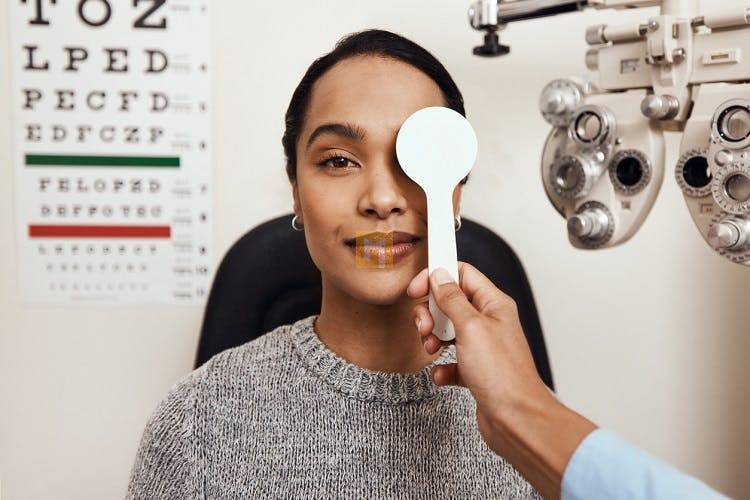Eyes
What to know about vision problems after stroke

What to know about vision problems after stroke
Because a stroke can affect different parts of the brain, it can cause a variety of symptoms, including balance and vision problems. The type of vision problems a person may have depends on the location of the stroke.
A stroke is caused by a loss of blood supply to part of the brain. Decreased blood supply prevents brain tissue from receiving oxygen and nutrients. Depending on which part of the brain is affected, this blockage can have far-reaching effects on the body.
Some of the main symptoms of a stroke are:
- Vision problems in one or both eyes
- Headache
- delirium
- speech difficulty
- Inability to move the face, arm or leg on one side of the body
After a stroke, you should see a doctor for consultation and treatment of vision problems. Your doctor can help diagnose other underlying health issues and prescribe treatment.
This article explains why vision problems can occur after a stroke. We also take a closer look at the different types of vision problems, including treatment options and how to manage your symptoms.
Why do vision problems occur after a stroke?
Damage to certain parts of the brain can cause vision problems after a stroke. Brain cells die quickly without oxygen, and when the blood supply to the brain is cut off, these cells are starved of oxygen.
If a stroke affects the part of the brain that controls the eyes and receives information, it can cause visual impairment.
For example, a stroke can damage the occipital lobe, which is responsible for processing visual information. A stroke can also affect the brainstem, which is responsible for visual balance, interpreting objects, and eye movement.
Visual impairments that were present before the stroke may worsen or new visual impairments may be added after the stroke.
Vision problems are very common after a stroke. According to a 2019 study, about 60% of stroke survivors are visually impaired. However, the percentage of people who experience symptoms varies greatly depending on the type of disorder.
Types of vision problems after stroke
In some cases, vision changes may be temporary or improve after exercise. However, other vision changes can be permanent.
After a stroke, a person may experience a variety of vision problems.
Vision loss
The field of view is what a person sees when he focuses his eyes on a certain point. This includes all objects in a straight line directly in front of you, as well as all objects around and towards you. When a person experiences visual field loss, they lose the ability to see part of that visual field.
The type of field loss depends on which part of the brain is affected by the stroke.
Visual field loss can occur on one side of either eye. For example, a person can only see left or right. This type, which is more common after a stroke, is called hemianopia and may require training to deal with visual field changes.
Sometimes blind spots or scotomas can affect one or both eyes, causing vision loss. This problem can also occur in the center of the visual field. In this case, when you look at the object, it “disappears” from your field of view.
In some people, vision loss may occur in the upper or lower part of the eye, resulting in loss of the upper or lower visual field. Or it can affect your peripheral vision, which is the part of your field of vision that is in the corner of your eye.
Other events may affect 1/4 of the visual field, resulting in the loss of 1/4 of the visual field.
Visual neglect
A stroke can also affect the way the brain processes visual information. This bug can cause many problems in visual processing. The most common type of problem with trusted sources is visual neglect.
Visual inattention or spatial inattention occurs when a person does not respond to visual stimuli in the area affected by the stroke. They may not be aware of or react to the injured party’s things.
Blindness can occur spontaneously or with other complications such as vision loss. Having both can make treatment more difficult or make some training methods less effective.
Eye movement problems
Physical eye movement can also be a problem, depending on the area of the brain affected by the stroke. When a stroke affects the nervous control of the eye muscles, the person may have difficulty controlling eye movements or the field of vision.
Some people experience nystagmus, which is a constant movement of the eyes. The movements can be jerky or jerky, and the eye can move back and forth on an axis or in a circle. Some may notice excessive eye movements such as rapid eye movements or rotation.
People may have difficulty moving their eyes in certain directions or controlling their gaze when following an object in their field of vision. When people look at objects, their eyes may blink or light up.
Eye movement problems can also affect how people judge distance between objects.
Dark vision
Injuries that affect nerve control can cause blurred or double vision.
Visual clarity may improve with rehabilitation and education, but may persist.
Other problems
Other vision problems can occur after a stroke.
For example, some people may have problems with photosensitivity. Some may have difficulty blinking or closing their eyes completely. This can cause other symptoms such as dry eyes, irritation and itching.
Problems such as loss of balance or coordination or changes in depth perception can also occur. When a person’s vision is blurred, they may have difficulty maintaining their balance and may bump into objects or trip over them as a result.
Some vision problems may go undiagnosed, go unnoticed, or be easier to ignore than others. However, it is important to consult an eye specialist to determine the best treatment.
A visit to the doctor
After a stroke, the person should work closely with the medical team to discuss possible visual symptoms.
Even if there are no obvious symptoms, your doctor may refer you to a specialist.
Doctors who specialize in eye and brain problems include neuro-optometrists and neuro-ophthalmologists. These specialists diagnose and treat neurological conditions that affect the visual system and those that affect the neural pathways that connect the eyes to the brain, respectively.
Poor vision treatment
A professional can help you develop a treatment plan for your vision problem to improve your vision, if possible.
Education
Certain training techniques can help your eyes adjust to blind spots and vision loss areas.
For example, skiing is the process of training the eyes to move into areas of poor vision. Encourage people to look left and right regularly. This approach helps individuals make the most of their remaining vision.
Ophthalmologists can retrain the eye with a combination of auditory and visual stimulation during training to compensate for visual field loss or depth vision loss.
Balance training and spatial awareness can help with coordination and loss of balance.
Early and ongoing education can provide some improvement in the first few months after stroke. However, a 2019 study found that a high percentage of patients continue to experience more than one vision impairment.
Corrective lens
Glasses and contact lenses are generally ineffective for stroke-related vision loss.
However, other types of corrective glasses can help for certain problems. For example, eyeglasses may use prisms for one or both optical source lenses.
Prisms help change the way we see things by changing the direction of light entering the eye. They help change things from one’s perspective. Or avoid looking at a place where the person loses sight.
Review
Vision problems are common after a stroke. The type of problems a person experiences depends on the area of the brain affected by the stroke.


















